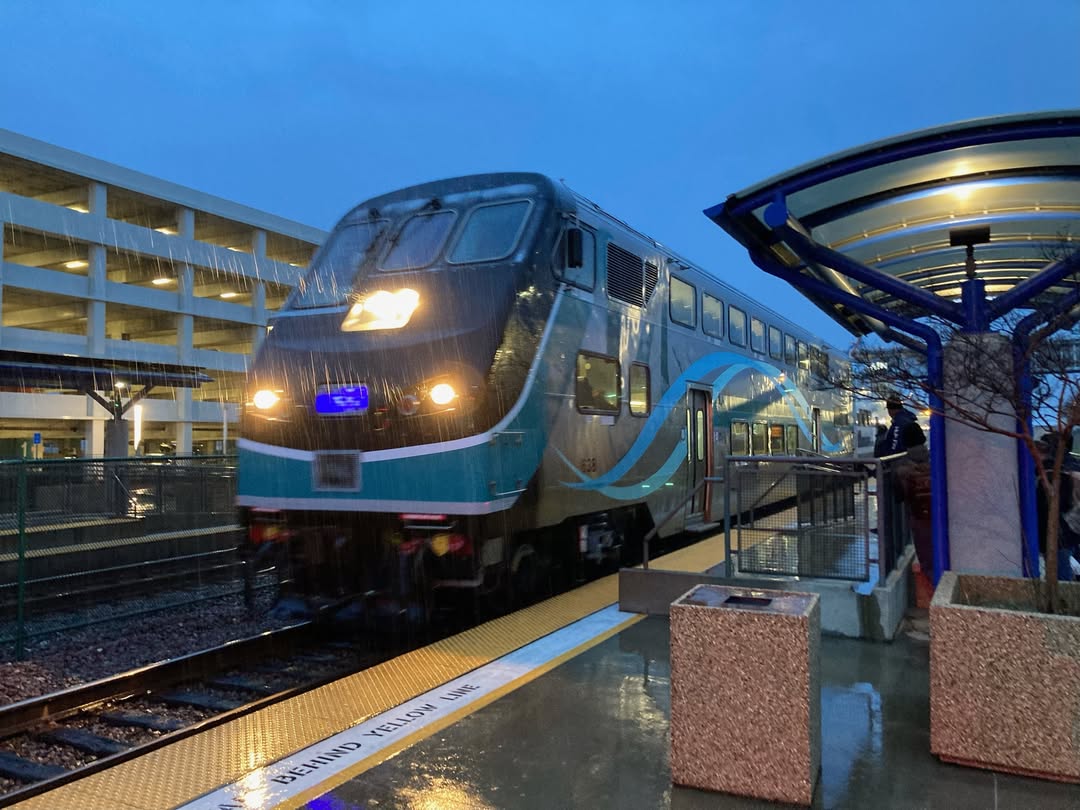The Metrolink brown line is projected as a high-capacity line of commuters that will connect major employment and cultural centers in Southern California with the key suburban attractions in the region. Having a timetable that makes it convenient for people who can travel early in the morning, at lunchtime, and at night, the Brown Line is a reliable alternative to the freeway traffic without harming the environment as a result of running efficient electric trains. It is also proposed to have modern facilities in stations along the route, including ADA-compliant platforms, digital information boards, safe bicycle parking, and large park-and-ride lots.
The Brown Line will serve as a solution to both the commuters and occasional travelers who want to use a convenient and environmentally friendly means of transport by linking residential areas with business and transport centers. Its systemic connection to the local buses and other Metrolink services allows smoother transfer of passengers to the destinations that are outside the core corridor served by the line.

Metrolink brown line overview
| Feature | Details |
|---|---|
| Purpose | Large capacity commuter rail connecting suburban areas to key job and cultural hubs. |
| Service Pattern | High frequency weekday trains and weekend trains. |
| Key Benefits | Cuts down congestion in the freeways and emissions through the use of effective electric-powered trains. |
| Station Amenities | ADA-compliant websites, online informational boards, locked bike locker rooms, park-and-ride parking lots. |
| Connections | Connected to local bus and other Metrolink lines to accomplish interchange. |
| Primary Riders | The sports riders are daily commuters, regional travelers and environmentally friendly riders. |
Metrolink brown line Stations
- L.A. Union Station
- Cal State L.A.
- El Monte
- Baldwin Park
- Covina
- Fairplex (service on fair days)
- Pomona–North
- Claremont
- Montclair
- Upland
- Rancho Cucamonga
- Fontana
- Rialto
- San Bernardino–Depot
- San Bernardino–Downtown
- Redlands–Downtown (limited weekday service)
Metrolink brown Line Stations All Days Schedule
| Station | Direction | Departure Times |
|---|---|---|
| Rancho Cucamonga → L.A. | Westbound | 4:48 AM, 5:48 AM, 6:07 AM, 6:48 AM, 7:18 AM, 7:48 AM, 8:48 AM, 9:48 AM |
| San Bernardino–Downtown → L.A. | Westbound | 5:12 AM, 6:12 AM, 7:12 AM, 7:42 AM, 8:12 AM, 9:12 AM, 10:12 AM |
| Rialto → L.A. | Westbound | 5:03 AM, 6:03 AM, 7:03 AM, 7:33 AM, 8:03 AM, 9:03 AM, 10:03 AM |
| Fontana → L.A. | Westbound | 4:56 AM, 5:56 AM, 6:56 AM, 7:26 AM, 7:56 AM, 8:56 AM, 9:56 AM |
| San Bernardino–Downtown → L.A. | Weekend / Westbound | 6:38 AM, 8:38 AM, 11:38 AM, 12:38 PM, 1:38 PM, 2:38 PM, 5:38 PM, 7:38 PM |

Metrolink Brown Line Transfer and Connections
1. Major Transfer Points
- Union Station (Los Angeles): All other Metrolink lines, Amtrak, and Metro Rail (Red, Purple, Gold, Silver Lines)
- Fullerton Station: Access to Amtrak Pacific Surfliner and buses.
- Orange Station: Connect to the OCTA local bus service.
- Riverside-Downtown: It will directly connect to Metrolink’s 91/Perris Valley Line and Riverside Line.
2. Connections with Other Metrolink Lines
- At Union Station: Connects with San Bernardino, Ventura County, Antelope Valley, Orange County, and Riverside lines.
- At Riverside-Downtown: Connections here to 91/Perris Valley and Riverside Line.
3. Bus & Local Transit Connections
- OCTA Buses (Orange County) at stations such as Orange and Fullerton.
- RTA Riverside Transit Agency (RTA) buses serve the city at stations in Highgrove and Riverside.
- Metro Local / Metro Rapid buses at Union Station.
4. Airport Connections
- Union Station → LAX FlyAway Bus for direct service to Los Angeles International Airport.
- Fullerton Station →Local shuttles to small airports such as John Wayne (SNA).
5. Key Travel Tip
- Be sure to consult Metrolink’s official schedule since transfer waiting time will vary during peak hours and off-peak hours.
Q. Which are the key stations of the Metrolink Brown Line?
The line serves Los Angeles Union Station, Cal State L.A., El Monte, Baldwin Park, Covina, Pomona -North, Claremont, Montclair, Upland, Rancho Cucamonga, Fontana, Rialto, San Bernardino -Depot, and San Bernardino -Downtown.
Q. What is the frequency of trains during weekdays and weekends?
Weekdays: 30-60 minutes during the high commuting times, 60-120 minutes during the noon and late evening. Weekends: It is often served on a 90120-minute schedule during the day.
Q. Are there any stations that suit riders with disabilities?
Yes. The entire San Bernardino Line has ADA-compliant features that include a ramp or elevator, tactile paving, available restrooms where possible, and designated parking.
Q. Included in the parking and bike facilities?
Most of the stations also have free or low-price parking areas, and most stations have electric-vehicle charging stations, as well as bike racks and secure lockers to promote multimodal use.
Q. Are passengers able to access other transit systems on this route?
Yes. Key transfer points include: Amtrak, Metro Rail, and many bus lines, Union Station, Los Angeles. El Monte Station on the El Monte Busway and regional buses. Omnitrans bus and the regional transit hub of San Bernardino.
